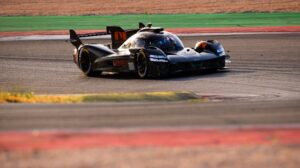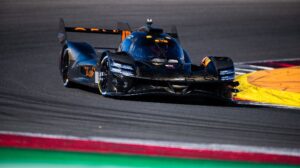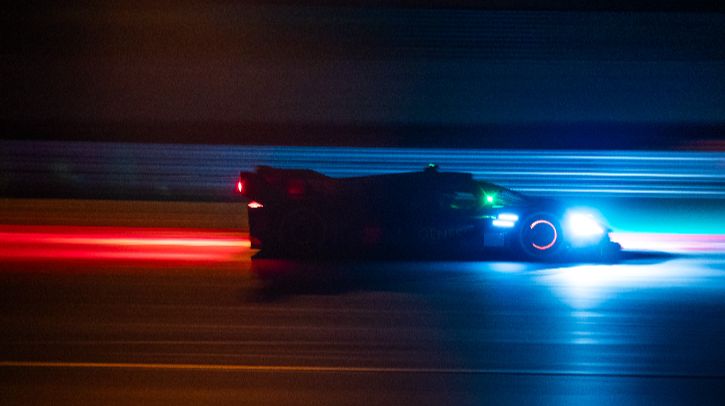Genesis Magma Racing has completed a successful first endurance test with the GMR-001 Hypercar, using three days of running at the Autódromo Internacional do Algarve in Portugal to test the reliability of every aspect of the car.
Maximum stress on components early in development
The Portuguese circuit test, which allowed for 32 hours of continuous running, represents a key step in the car’s development before its debut in the hypercar class of the FIA World Endurance Championship (WEC) in 2026. The running aimed to confirm the reliability of all aspects of the car, testing them up to – and beyond – breaking point.
“The main target of an endurance test is to put miles on the car and see what problems you can generate along the way,” explained Genesis Magma Racing chief engineer Justin Taylor. “We’re still only six or seven test days into the development of the car, so at this stage you’re hoping to have problems show up so that you have a chance to solve them.”

He continued, “I think we can be satisfied with the outcomes from the test. We did a lot of mileage, but we’re very early in the development of the car, so we were learning something new with every stint, which we can take away and on to our next tests.”
Time in the car was shared between André Lotterer, Pipo Derani and new Genesis Magma Racing WEC drivers Mathys Jaubert and Dani Juncadella, who had their first laps in the GMR-001 hypercar as part of the test. “As a driver, you want to do good lap times so you can properly stress components with the intention of finding failures,” said Derani. “It’s a brand-new car and we need to see if the parts can last long enough. If we find any weak points, then we work out what we can do to improve. Next year, our big race is a 24-hours, so we try and prepare ourselves for that.”
Testing
Relatively high temperatures – more than 30°C at their hottest – provided a thorough test for the GMR-001’s innovative cooling package, as well as the 3.2-liter twin-turbo V8 engine and the rest of the powertrain components.
As the car ran throughout the night, attention also focused on the illumination provided by the specially designed headlights, which echo the Two-Line design of Genesis road cars. “We quickly realized that our lights are very good,” said Lotterer, who was the first driver to climb aboard after sunset. “It is very satisfying, because I know it’s been a big topic. We decided to develop our own lights to keep the Genesis design identity, but we knew we also needed the quality. So that was very positive to be able to sign off so easily.”

During the long-distance running, drivers completed double or even triple stints at the wheel of the GMR-001. The long periods in the cockpit – especially on such a physically demanding track as the undulating Autódromo Internacional do Algarve circuit – allowed them to provide important feedback on driver comfort. The same long stints allowed engineers to gather data needed to efficiently manage race stints. The team could measure the wear of different tire compounds in different track temperatures and manage the amount of energy to match the levels mandated by the WEC regulations.
Next steps
The next steps of testing will place more emphasis on extracting maximum performance from the GMR-001 in all conditions, before combining this with further endurance runs and full operational tests to prepare the team for their race debut.
“Our next tests are going to be more adding performance. We’re going to have more opportunities to change calibrations, change software, change parts and then just keep on pushing. Then we get to put that through our next endurance test,” concluded Taylor.
In related news, Mercedes-AMG introduces the GT2 Edition W16 – its most powerful customer racing car


